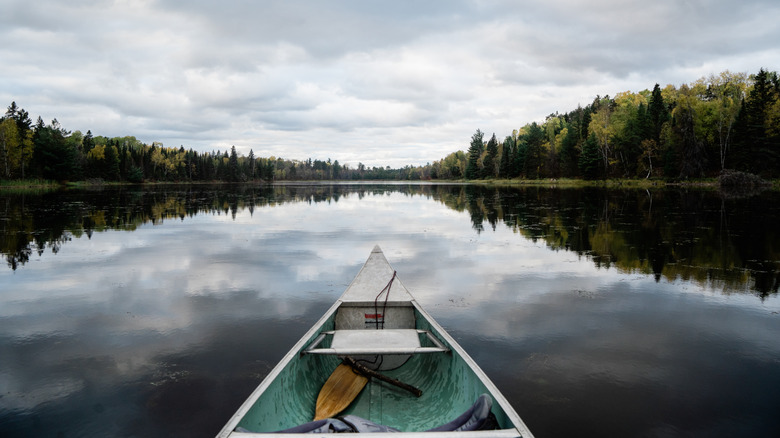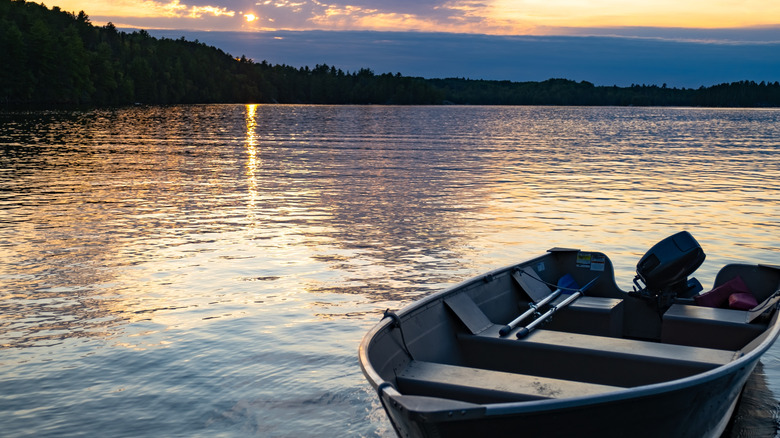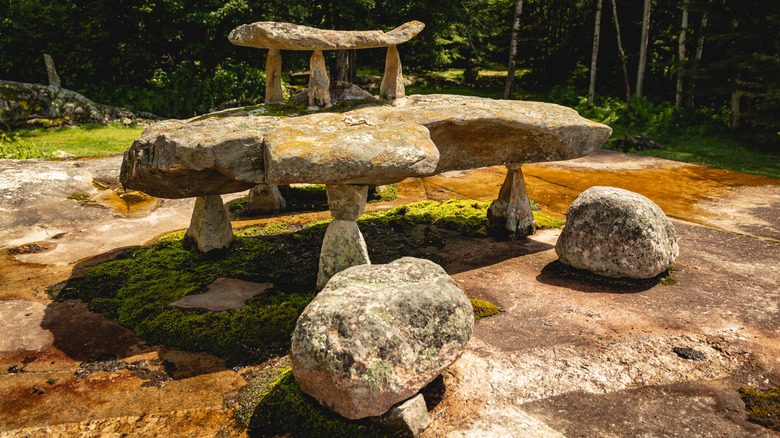This Less-Visited National Park Is A Fall Foliage Paradise To Add To Your Bucket List
In a typical year, about 230,000 people visit Voyageurs National Park, a forested area along the northern border of Minnesota. This figure is nothing to sneeze at, especially when about a quarter of them spend at least one night in these remote woodlands. But it's only a fraction as popular as big-name destinations, such as Smoky Mountain National Park, which attracted more than 12 million visitors in 2024. This all makes sense: For most people, Voyageurs is harder to get to. These public lands aren't close to any major airports, and you'll have to drive more than four hours from Minneapolis, the closest major city. Minnesota is famous for its flatness, as is Ontario to the north, which may underwhelm prospective vacationers. If you've even heard of Voyageurs National Park, you may second-guess its pronunciation. Like, what's with the funky spelling?
Yet this park is a fantastic place to spend time, especially in the fall. Peaceful, secluded, and quilted in trees, the landscape burns bright at autumn's peak. As temperatures cool, the maddening swarms of mosquitoes and deer flies evaporate into crisp air. Fewer visitors show up, which means fewer outboard motors; you could spend hours on these lakes and never hear anything louder than gurgling water around a canoe paddle. Like the Boundary Waters nearby, Voyageurs abuts the Canadian border and is popular with paddlers and campers; yet this area is a little more developed, including 270 established tent sites. Like St. Croix State Park, Voyageurs is an underrated Midwestern park that you've likely never heard of, and if you're looking for peaceful fall days on the lake, this is the place.
The pioneering history of Voyageurs State Park
Despite Minnesota's vast rural tracts, Voyageurs is the only national park in the state. The name comes from the Voyageurs, a class of merchants and furriers who wandered this wilderness for well over 100 years, trapping animals and trading with Indigenous tribes. These French-Canadian pioneers had a reputation for peaceful co-existence between colonists and First Nations peoples, and they traveled largely by canoe. The Voyageurs would slowly make their way across land and lake, carrying large cargos as they went. They were known for "portaging," or carrying their watercraft along trails from one body of water to another. These men had to contend with deadly weather, merciless insects, and profound isolation, but many felt liberated out here — and made fortunes from frontier commerce.
Founded in 1975, the park covers about 340 square miles. Much of its area is made up of water, encompassing four large lakes, 26 smaller lakes, and more than 500 islands. The lakes have several marinas and boat launches, and fishing is permitted with a valid license. Entrance to the park is totally free, although you'll have to pay a fee to camp out or put in a houseboat. The impressive — and helpful — Crane Lake Visitors Center is open year-round, and Voyageurs National Park is a prime location to spot the aurora borealis, depending on weather conditions. Indeed, Minnesota is one of the best places in the United States to see the Northern Lights.
How to visit and enjoy Voyageurs National Park
Pretty much everyone who visits Voyageurs National Park will end up driving there, and most will pass through International Falls, a town of 5,700 people on the western edge of the park. True to its name, International Falls is located right next to the U.S.-Canada border, which is marked here by the Rainy River. The town has a golf course, a museum dedicated to Canadian football player Bronko Nagurski, and a massive gift shop called Border Bob's. You'll also find places to buy supplies and outdoor equipment before you venture into the park; just east of town, you can rent canoes or kayaks from Voyageurs Outfitters. If you don't like the idea of camping in isolated forest, you can pick from about a dozen hotels in International Falls, which range in price from $70 to the high $100s.
The most unique attraction is the Ellsworth Rock Gardens in Kabetogama. Created by groundsman and visual artist Jack Ellsworth, the Rock Gardens boast dozens of terraced flower gardens, which are embedded in natural stone formations. Ellsworth moved and stacked boulders of various shapes into primitive sculptures, many of which look like chairs, tables, and other pieces of furniture. He created more than 200 pieces between the 1940s and 1960s, and today the gardens are considered one of the park's main destinations. While you're up this way, consider a side-trip to Bear Head Lake, an extremely overlooked state park that honestly might be the best in Minnesota.


